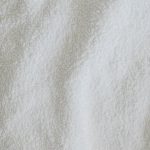When it comes to sewing, the right thread can make all the difference. As the saying goes, 'the right tool for the right job,' choosing the best sewing thread for your fabric is essential for achieving professional results. Understanding the weight, fiber, color, and stretch requirements of your fabric will guide you in selecting the most suitable thread for your project.
Whether you're working with delicate silk, sturdy denim, stretchy knits, or unique specialty fabrics, mastering the art of matching thread to fabric will elevate the quality and durability of your creations. In this guide, we'll explore the key factors to consider when choosing the best sewing thread for your fabric, empowering you to achieve mastery in your sewing endeavors.
Key Takeaways
- Choose the correct thread weight for smooth and even stitches and to ensure durability and strength of seams.
- Match the thread fiber to the fabric type to ensure compatibility and a visually pleasing outcome.
- Consider the dominant color in the fabric and choose a thread color that complements it.
- Use specialty threads and bobbins for unique fabrics and decorative stitching to enhance the appearance of your projects.
Understanding Thread Weight
When choosing the right sewing thread for your fabric, understanding thread weight is essential for achieving optimal stitching results. Thread weight refers to the thickness of the thread, and it plays a crucial role in determining stitch compatibility with different fabrics.
Thread thickness is denoted by a number, with lower numbers indicating thicker threads and higher numbers representing thinner threads. Understanding the relationship between thread weight and fabric is vital for producing high-quality, durable seams.
Thicker threads, such as those with a lower weight number, are best suited for heavy fabrics like denim or upholstery, as they provide greater strength and durability. On the other hand, thinner threads, indicated by higher weight numbers, are more suitable for lightweight fabrics such as silk or chiffon, as they create less bulk and are less likely to cause puckering.
Choosing the correct thread weight for your fabric ensures that the stitches will lay smoothly and evenly, without causing any tension issues. By understanding the intricacies of thread weight and its impact on stitch compatibility, you can elevate the quality of your sewing projects and achieve professional-looking results.
Matching Thread Fiber to Fabric Type
Understanding the relationship between thread weight and fabric type is crucial for ensuring that your stitches will lay smoothly and evenly. When matching thread fiber to fabric type, consider the following:
- Thread strength and durability: Choose a thread that matches the strength and durability requirements of your fabric. For heavy-duty fabrics like denim or canvas, opt for a strong, durable thread that can withstand the stress of these materials. Lighter weight fabrics, on the other hand, may require a finer, less robust thread to prevent damage to the delicate fibers.
- Fabric compatibility and care: Take into account the compatibility of the thread fiber with the fabric type. Natural fibers like cotton or silk may benefit from a cotton or silk thread that will blend seamlessly and age gracefully with the fabric. Additionally, consider the care instructions for the fabric. If the fabric requires frequent washing or exposure to harsh conditions, choose a thread that can withstand these demands.
Matching the thread fiber to the fabric type ensures not only a visually pleasing outcome but also a garment or project that will withstand the test of time.
Thread Color Considerations
You should consider the color of your thread to ensure it complements the fabric and enhances the overall appearance of your project. When matching thread color to fabric, it's crucial to achieve a seamless blend. Start by identifying the dominant color in the fabric and choose a thread that closely matches it. If an exact match isn't possible, opt for a slightly darker shade as it tends to blend in better than a lighter one.
For multi-colored fabrics, select a thread color that matches the background or the color that appears most frequently. Additionally, consider the function of the garment or item you're sewing. For high-stress areas, such as seams or areas that will undergo frequent washing or heavy use, a thread with good durability is essential. Polyester and cotton-wrapped polyester threads are excellent choices due to their strength and resistance to fraying.
Ultimately, achieving a seamless and polished look in your sewing projects requires careful consideration of thread color matching and durability.
Elasticity and Stretch Thread Needs
To ensure the proper handling of fabrics with elasticity and stretch, sewing with a stretch thread is crucial for maintaining the flexibility and resilience of the material. When considering the elasticity and stretch thread needs for your fabric, it's important to understand the following:
- Thread durability is essential: Fabrics with elasticity require threads that can withstand the repeated stretching and recovery without breaking or losing their shape.
- Elasticity is key: Opt for threads specifically designed to provide elasticity, ensuring that the fabric retains its stretch and shape after sewing.
- Stretch thread selection: Look for threads labeled as 'stretch' or 'elastic' to ensure they're suitable for your fabric's stretch requirements.
- Benefits of stretch threads: These threads offer superior stretch and recovery characteristics, allowing the fabric to move and stretch without restricting its natural properties.
- Maintaining fabric resilience: A stretch thread helps the fabric retain its original form, preventing it from becoming distorted or losing its elasticity over time.
Selecting the right stretch thread for your fabric is crucial in preserving its stretch and resilience while ensuring the durability of your sewn creations.
Heavy-Duty Thread for Tough Fabrics
When sewing tough fabrics, choosing a heavy-duty thread is essential to ensure strong and resilient seams. For heavy-duty sewing projects, nylon thread and polyester thread are top choices due to their durability and strength.
Nylon thread is known for its high tensile strength, abrasion resistance, and flexibility, making it suitable for heavy-duty fabrics like canvas, denim, and upholstery materials. It's also resistant to mildew, making it ideal for outdoor and marine applications.
On the other hand, polyester thread is also a popular choice for tough fabrics due to its high tensile strength, excellent resistance to UV exposure, and minimal stretching. It's suitable for sewing heavy fabrics such as leather, vinyl, and heavy-duty canvas.
Both nylon and polyester threads are available in a range of thicknesses, allowing you to choose the appropriate weight for your specific project.
When working with tough fabrics, using a heavy-duty thread ensures that your seams can withstand the stress and strain these materials often endure.
Specialty Threads for Unique Fabrics
For unique fabrics like silk, wool, and lace, specialty threads designed to complement delicate fibers and intricate textures are essential for achieving professional results. When sewing these fabrics, using the right specialty thread will ensure that your seams are strong and suitable for the specific requirements of these materials.
- Silk Thread: When working with delicate fabrics like silk, using silk thread is crucial as it offers a fine, smooth finish that reduces the risk of damage to the fabric.
- Delicate Fabrics: Specialty threads for delicate fabrics are often finer and more flexible to prevent puckering or damage to the fabric during stitching.
- Metallic Thread: For decorative stitching on fabrics like lace, metallic threads can add a touch of glamour and elegance, but they require special attention due to their unique properties.
- Decorative Stitching: Threads designed for decorative stitching often have a higher sheen and come in a variety of colors, allowing you to add intricate designs to your unique fabrics.
- Specialty Bobbins: Some specialty threads may require specific bobbins to ensure smooth and consistent stitching on unique fabrics.
Thread Maintenance for Longevity
To ensure the longevity of your sewing thread, proper storage techniques are essential. You should keep your thread in a cool, dry place away from direct sunlight to prevent it from becoming brittle.
Additionally, regular adjustments to thread tension will help maintain the quality and strength of the thread as you sew.
Proper Storage Techniques
Storing your sewing thread in a cool, dry place can help maintain its quality and extend its longevity. Proper storage and thread care are crucial for preserving the integrity of your sewing thread. Here are some tips for storing your sewing thread:
- Keep thread away from direct sunlight to prevent fading and weakening of the fibers.
- Store thread away from heat sources to avoid potential melting or deterioration.
- Use airtight containers or zipper storage bags to protect thread from dust and moisture.
- Store thread spools upright to prevent tangling and ensure ease of use.
- Consider using a thread rack or organizer to keep your thread collection neatly arranged and easily accessible.
Following these storage techniques will help prolong the life of your sewing thread and maintain its quality for future use.
Thread Tension Adjustments
When adjusting thread tension for longevity, ensure that you use the appropriate tension settings according to the fabric and thread type you're sewing with. Incorrect tension can cause a range of issues, from loose stitches to thread breakage.
To troubleshoot problems related to thread tension, start by rethreading the machine, ensuring the thread is properly seated in the tension discs and the bobbin is inserted correctly. If issues persist, check the machine compatibility with the thread weight and type being used. Different machines may require specific adjustments to accommodate certain threads.
Always refer to the machine manual for guidance on adjusting tension settings. Proper thread tension maintenance is crucial for the longevity of both your machine and the quality of your sewing.
Frequently Asked Questions
Can I Use the Same Thread for Both Sewing and Quilting?
Yes, you can use the same thread for both sewing and quilting. Adjust thread tension for quilting and use a larger needle size for quilting. Consider the fabric and the intended use of the quilt for best results.
How Do I Choose the Right Thread for Embroidery on Delicate Fabrics?
When choosing thread for delicate fabric embroidery, consider needle size and fabric compatibility. Adjust thread tension to prevent puckering. Use a finer weight thread for intricate designs. Experiment with different threads to find the best match.
Are There Specific Threads for Sewing Leather or Faux Leather?
When sewing leather, it's crucial to use a durable thread that can withstand the material's toughness. Consider using polyester or nylon threads, as they offer excellent strength and durability for leather stitching. For faux leather, opt for similar stitching techniques.
Can I Use Regular Thread for Sewing Stretchy or Knitted Fabrics?
Yes, you can use regular thread for sewing stretchy or knitted fabrics, but it may not provide the necessary stretch and durability. Consider using a stretch or polyester thread for these fabrics to ensure better results.
What Thread Should I Use for Outdoor or Heavy-Duty Sewing Projects, Like Making a Tent or Backpack?
For outdoor or heavy-duty sewing projects like making a tent or backpack, use a strong, weather-resistant thread. Opt for a heavy-duty thread size and consider matching the thread color with your fabric for a polished look.
- Where to Buy Acrylic Bouclé Fabric by the Yard - July 3, 2025
- Where Does Bouclé Fabric Come From? The History of a Classic - July 3, 2025
- When Does Bouclair Have Sales? How to Get the Best Deals - July 3, 2025




